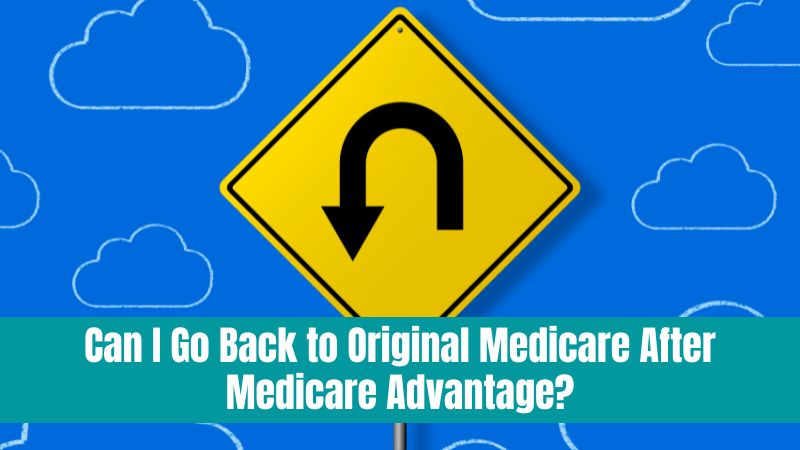Can I switch back to Original Medicare after being enrolled in a Medicare Advantage Plan? A comprehensive guide on understanding the differences between Original Medicare and Medicare Advantage, the process of switching back to Original Medicare, and the role of prescription drug plans and Medigap policies. Assistance from Manatee Insurance Solutions LLC is available for personalized support and expert advice.

Introduction to Medicare Options
Navigating the world of Medicare can feel like exploring a labyrinth, with different paths leading to various coverage options. At the heart of this complex system are two primary pathways for beneficiaries: Original Medicare (Part A and Part B) and Medicare Advantage (Part C) plans. Original Medicare, the traditional fee-for-service program managed by the federal government, covers hospital insurance (Part A) and medical insurance (Part B). On the flip side, Medicare Advantage Plans are an alternative, offered by private insurers approved by Medicare, bundling the benefits of Parts A, B, and often Part D along with additional services.
Understanding the differences between these two options is crucial. Original Medicare offers wide-ranging provider options with direct billing, but may leave significant out-of-pocket expenses for the beneficiary. Medicare Advantage Plans, while often providing extra benefits like dental, vision, and prescription drug coverage, may limit beneficiaries to specific provider networks and come with varying out-of-pocket costs and rules for service coverage.
Understanding Medicare Advantage
Medicare Advantage Plans stand out by offering a package that often includes Part D prescription drug coverage and additional benefits not available through Original Medicare, such as dental, hearing, and vision care. However, these plans come with a notable caveat: network restrictions. Beneficiaries must often use a specific network of doctors and hospitals to be covered, which can be a significant limitation for some. Additionally, while these plans must cover all the services that Original Medicare provides, they can implement different rules, costs, and restrictions.
One illustrative example is the case of a beneficiary who opted for a Medicare Advantage Plan because of its dental coverage and later found out that their preferred dentist was not in the plan’s network. This situation exemplifies the trade-offs that come with choosing Medicare Advantage over Original Medicare.
Switching Back to Original Medicare
For those considering going back to original Medicare after Medicare Advantage, the path involves specific steps and timing. Disenrollment is typically possible during the Annual Enrollment Period (October 15 to December 7) or the Medicare Advantage Open Enrollment Period (January 1 to March 31). To initiate the switch, beneficiaries must contact their current plan to cancel enrollment and then call 1-800-MEDICARE for guidance on returning to Original Medicare. Coverage under Original Medicare will begin on the first day of the month after the plan processes the disenrollment request, ensuring a seamless transition.
The Role of Prescription Drug Plans and Medigap
When switching back to Original Medicare, beneficiaries might find themselves without prescription drug coverage, which is where stand-alone prescription drug plans (PDPs) come into play. Additionally, to manage the out-of-pocket expenses that Original Medicare does not cover, such as copayments, coinsurance, and deductibles, purchasing a Medigap policy, also known as Medicare Supplement Insurance, can be a wise choice. However, it’s essential to compare the coverage and costs of Medigap policies from different insurers to select the best fit.
Special Considerations and Enrollment Periods
Switching between Medicare Advantage and Original Medicare isn’t limited to just the Annual Enrollment Period. Special Enrollment Periods (SEPs) offer opportunities for changes based on specific life events, such as moving out of a plan’s service area. Understanding these periods is vital to avoiding coverage gaps and ensuring that beneficiaries can make changes when necessary.
Assistance from Manatee Insurance Solutions LLC
For those feeling overwhelmed by the intricacies of Medicare, Manatee Insurance Solutions LLC, based in Chiefland, FL, offers expert guidance. Linda Hagan and the team specialize in helping beneficiaries navigate their insurance options, including the process of switching back to Original Medicare after being enrolled in a Medicare Advantage Plan. For personalized support, beneficiaries can reach out to Manatee Insurance Solutions at (352) 221-3779 or visit their website for more information.
In summary, while Medicare Advantage Plans offer additional benefits, the flexibility and broad coverage of Original Medicare might be a better fit for some beneficiaries. Understanding the differences, knowing the enrollment periods, and considering personal healthcare needs are crucial steps in making an informed decision. And for those seeking assistance, resources like Manatee Insurance Solutions LLC are invaluable in navigating the complexities of Medicare coverage options.


